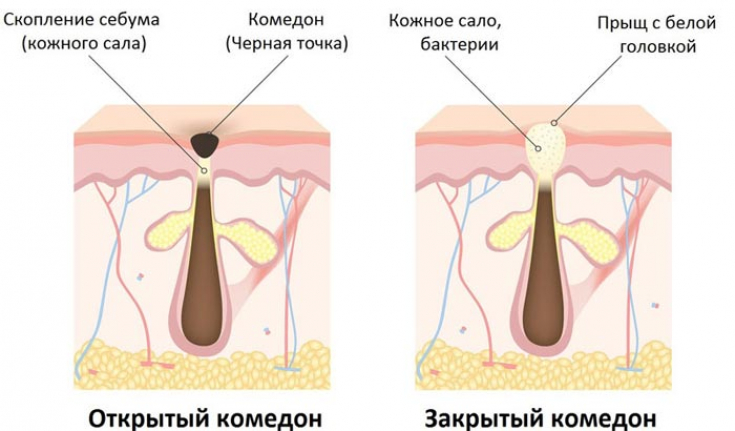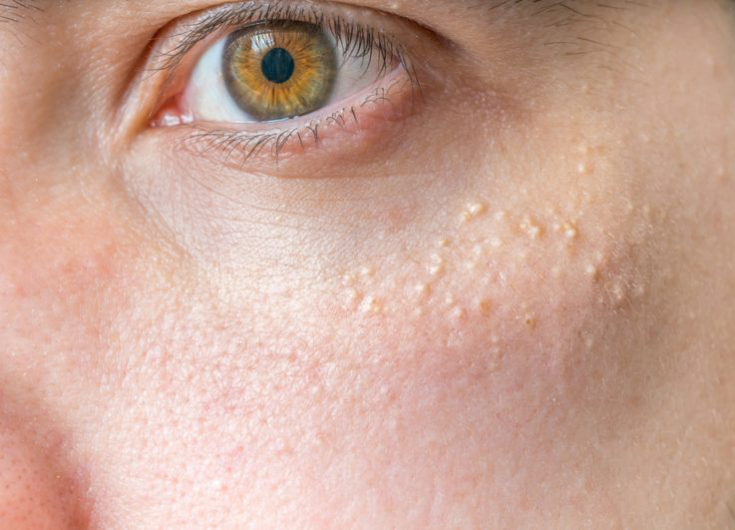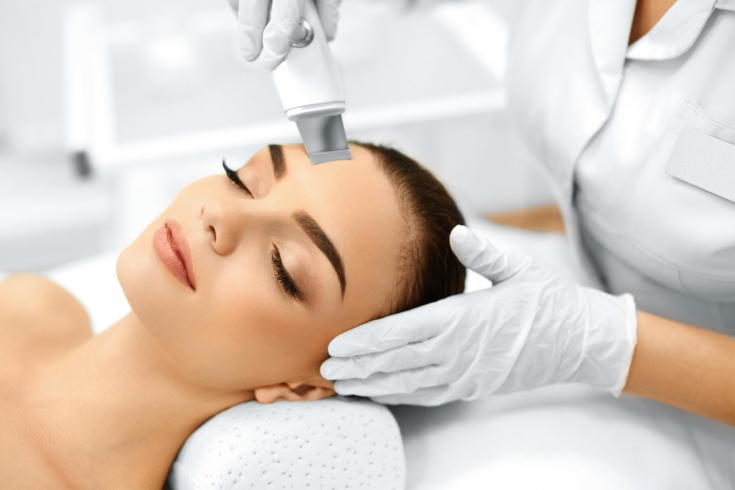Closed comedones are a concern for most of the younger population and those with oily skin types. White nodules not only spoil the appearance, but can easily develop from a cosmetic to a medical problem.
The question of how to get rid of closed comedones is not only of concern to teenagers. Despite the fact that this problem most often occurs during puberty, anyone can face it. You can cope with comedones if you take a comprehensive approach to the issue of treatment and clearly understand what leads to their appearance.
Read this article about the causes of closed comedones, as well as about the prevention and treatment of a dermatological problem.
Pathogeny of closed comedones: mild form of acne as a consequence
Comedones are a type of cysts that form in the skin due to the accumulation of sebum and horny masses that block the pores. The accumulated sebum first looks like a white nodule under the skin, and when interacting with oxygen in the air, the contents of the pore darken. Elements are usually found on the face, but can also occur on the shoulders or in the chest area. When squeezing a closed comedone, its contents are hardly released.
Follow us on Instagram
Bacterial penetration leads to inflammation of the element and infection of the inflamed areas of the skin.
The presence of multiple closed and open comedones may indicate comedonal acne.
In the comedonal form of acne, no more than ten comedones occur in one area, pustules and nodes are not typical. Fortunately, this form of acne is mild and treatable.
Factors provocateurs of closed comedones: main causes
Some people are more prone to clogged pores and comedones. This may be due to increased sebum secretion or hyperkeratosis. Closed comedones are common in teenagers, adults with oily or combination skin types.
Studies show that smoking can damage the skin and cause clogged pores.
Closed comedones can occur for several reasons, including:
• incorrect facial skin care or poor cleansing;
• use of comedogenic or poor-quality cosmetics;
• serious hormonal disorders;
• presence of diseases of the gastrointestinal tract;
• negative influence of the external environment;
• chronic stress;
• the presence of a genetic predisposition to this disease.

Timely diagnosis of closed comedones and their causes will save the patient from further cosmetic problems and the development of more severe forms of acne.
Decisive factors in the development of acne: P.acnes strain and sebum
Prevention and treatment of closed comedones: what is needed first of all
Treatment and prevention of closed comedones consists of maintaining personal hygiene, avoiding an unhealthy lifestyle, maintaining a balanced diet, proper skin care, and using products that contain alpha hydroxy acids.
Regular visits to a specialist and cosmetic procedures are also required. In some cases, the use of antibacterial ointments is indicated in the presence of local inflammation of the skin (clindamycin, erythromycin).
There are several effective treatments for closed comedones. These include:
• cleansing the face at the beautician;
• drug treatment;
• the use of cosmetics.
There are several types of cleansing closed comedones. Mechanical cleaning is carried out by steaming the skin and removal of closed comedones with a special tool.
Ultrasonic cleaning allows you to stimulate cell regeneration and remove the upper keratinized layers of the skin, gently cleansing the skin. Peeling — a type of cleansing that dissolves closed comedones with chemicals.

Recommended set of anti-comedone products:
1.cleansing gel or foam (to dissolve sebaceous plugs);
2. lotion with antiseptic action;
3.means that normalize oily skin, help cleanse pores;
4. preparations narrowing the pores (to prevent the ingress of pollution);
5. special preparations of infrequent use for the purpose of therapeutic care.

Recommended Ingredients in Comedone Skincare Includes acids (salicylic, linolenic, lactic, azelaic, glycolic, thioctic, hyaluronic), urea, niacinamide, lactobacilli, glycosaminoglycans, betaine salicytate, yeast extract, ubiquinone, chamomile, arnica extracts.
Thank you for staying with estet -portal.com. You may also be interested in other articles in the "Dermatology" section: Acne Treatment: Efficacy and Safety of Topical Antibacterials







Add a comment